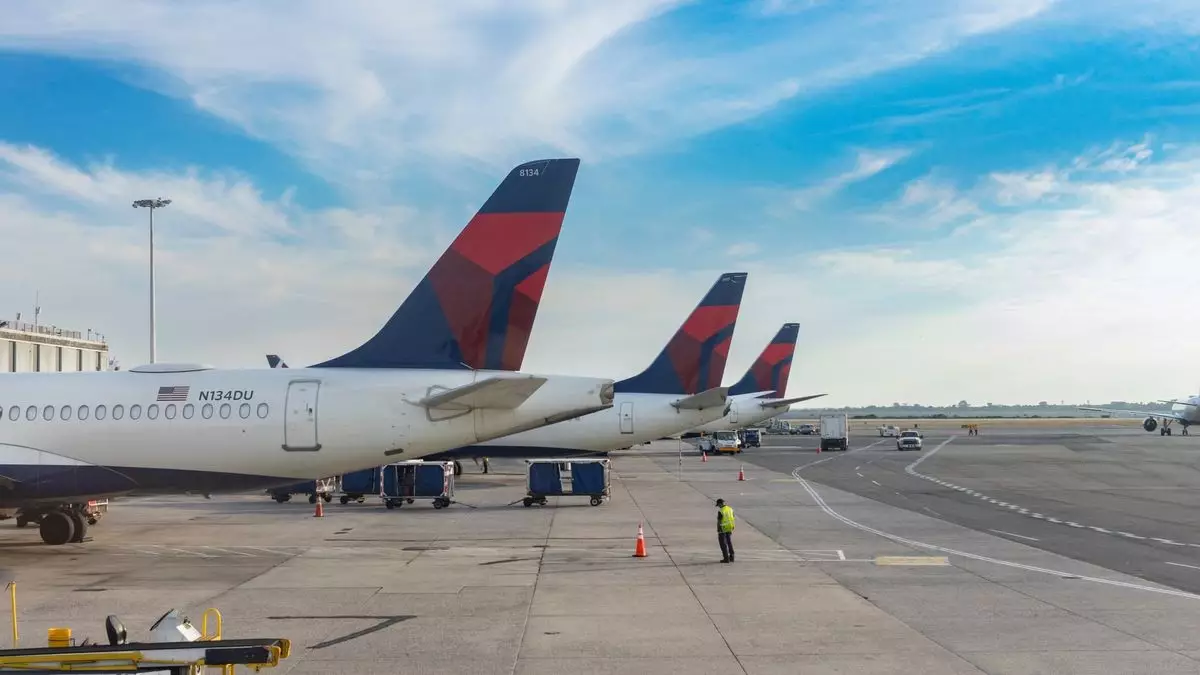Delta Air Lines has faced substantial challenges in the third quarter of the fiscal year, reporting a stark 30% reduction in its operating income. This downturn is attributed to a combination of operational inefficiencies experienced during a widespread outage and an overarching issue of industry overcapacity. In the context of rising operational costs coupled with diminished performance metrics, Delta’s financial results showcase the complexities of navigating a turbulent aviation market. Current figures illustrate that the airline’s operating income fell to $1.4 billion, a significant decline from $1.98 billion the previous year. Despite a minor increase in total revenues to $15.7 billion — a 1% rise attributed to a 4% increase in capacity — the reality of a 6% hike in expenses has overshadowed these gains.
One of the critical contributors to Delta’s operational struggles was the fallout from a severe outage linked to CrowdStrike. This incident led to the cancellation of around 7,000 flights over a five-day span, incurring an estimated $500 million loss in net operating income. Such disruptions inevitably hinder the airline’s ability to deliver a seamless travel experience, thus affecting customer trust and brand loyalty. Moreover, the operational challenges have dragged down the airline’s operating margin, which decreased to 8.9% from 12.8% one year earlier. The consequence of these operational hiccups cannot be overlooked as they profoundly affect financial performance and airline reputation.
Despite the adversities encountered in Q3, there is a cautious optimism regarding Delta’s outlook for the fourth quarter. Glen Hauenstein, Delta’s president, expressed confidence in the airline’s capacity to outperform last year’s figures, projecting an increase in operating margins to between 11% and 13%. This hopeful forecast is primarily founded on a correction in industry dynamics, wherein airlines are finally aligning capacity with consumer demand more effectively. Previous overcapacity not only contributed to lower airfare revenues but also exerted downward pressure on revenue-per-mile figures for airlines.
Recent consumer price index data suggests a positive trend, with a 1.6% increase in industry ticket prices compared to last year. Such pricing adjustments reflect strategic moves in the airline sector, particularly among discount carriers who are tempering their flight schedules in response to reduced summer demand. Delta plans to mirror this trend with an adjusted growth in capacity of 3% to 4% for Q4, anticipating that reduced industry-wide capacity should foster an uptick in overall fares.
In closing, Delta Air Lines is at a critical juncture, balancing the ramifications of operational setbacks against a backdrop of fluctuating industry dynamics. While the airline continues to grapple with the fallout from past challenges, the potential for recovery lies in its ability to recalibrate capacity, implement effective pricing strategies, and restore operational integrity. With strategic foresight and market adaptability, Delta may very well flip the narrative and emerge stronger in the contours of this evolving aviation landscape. The upcoming months will be telling as stakeholders remain keenly focused on the airline’s next moves amid an ever-changing industry.


Leave a Reply